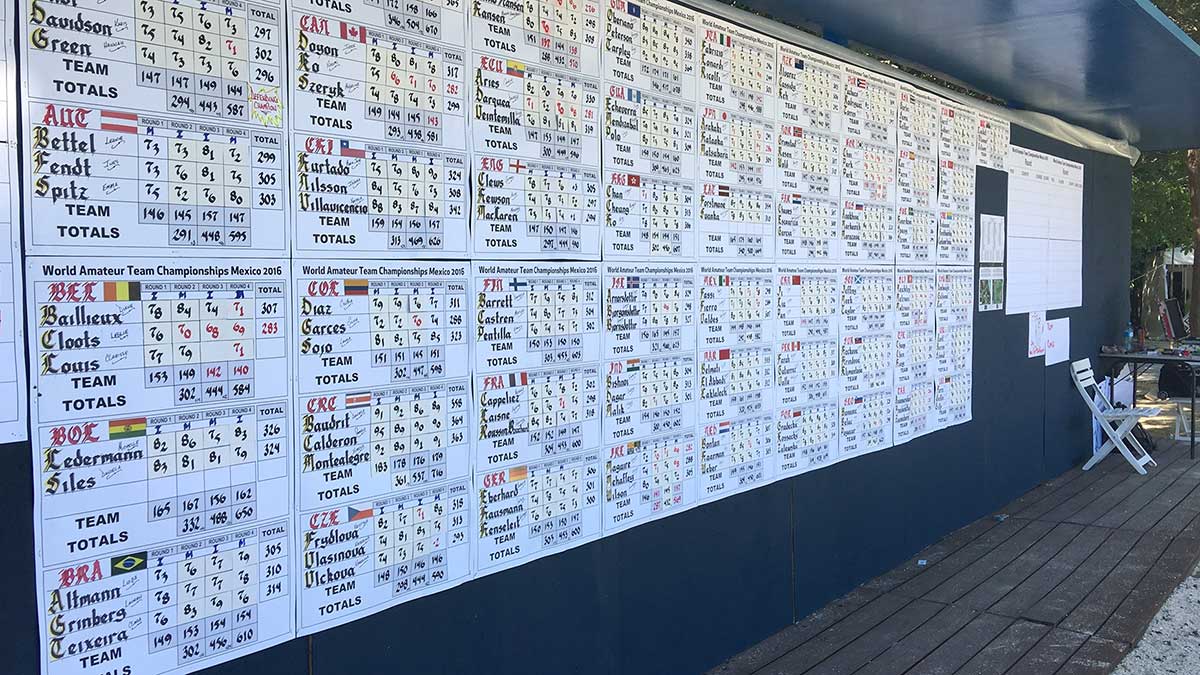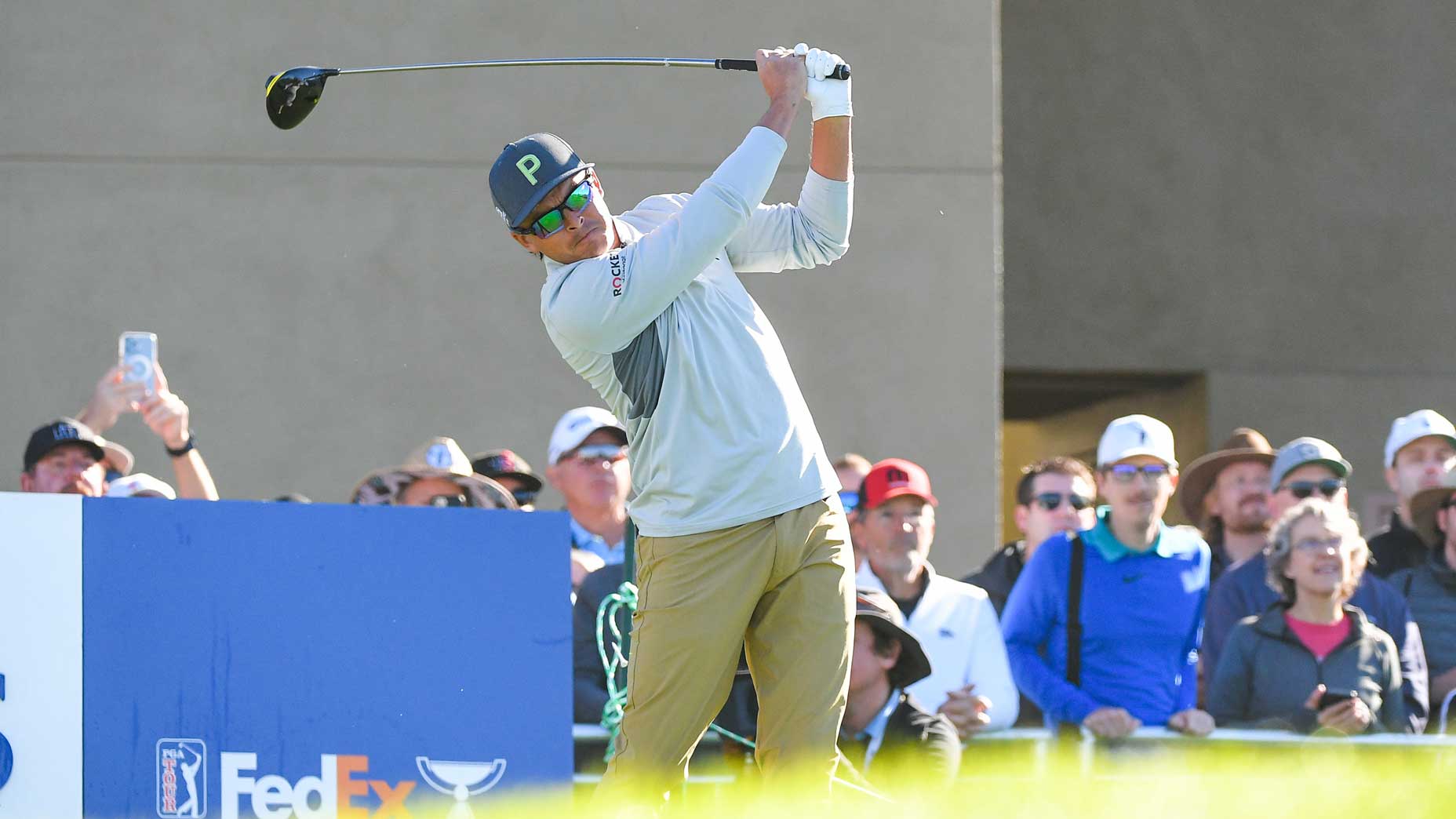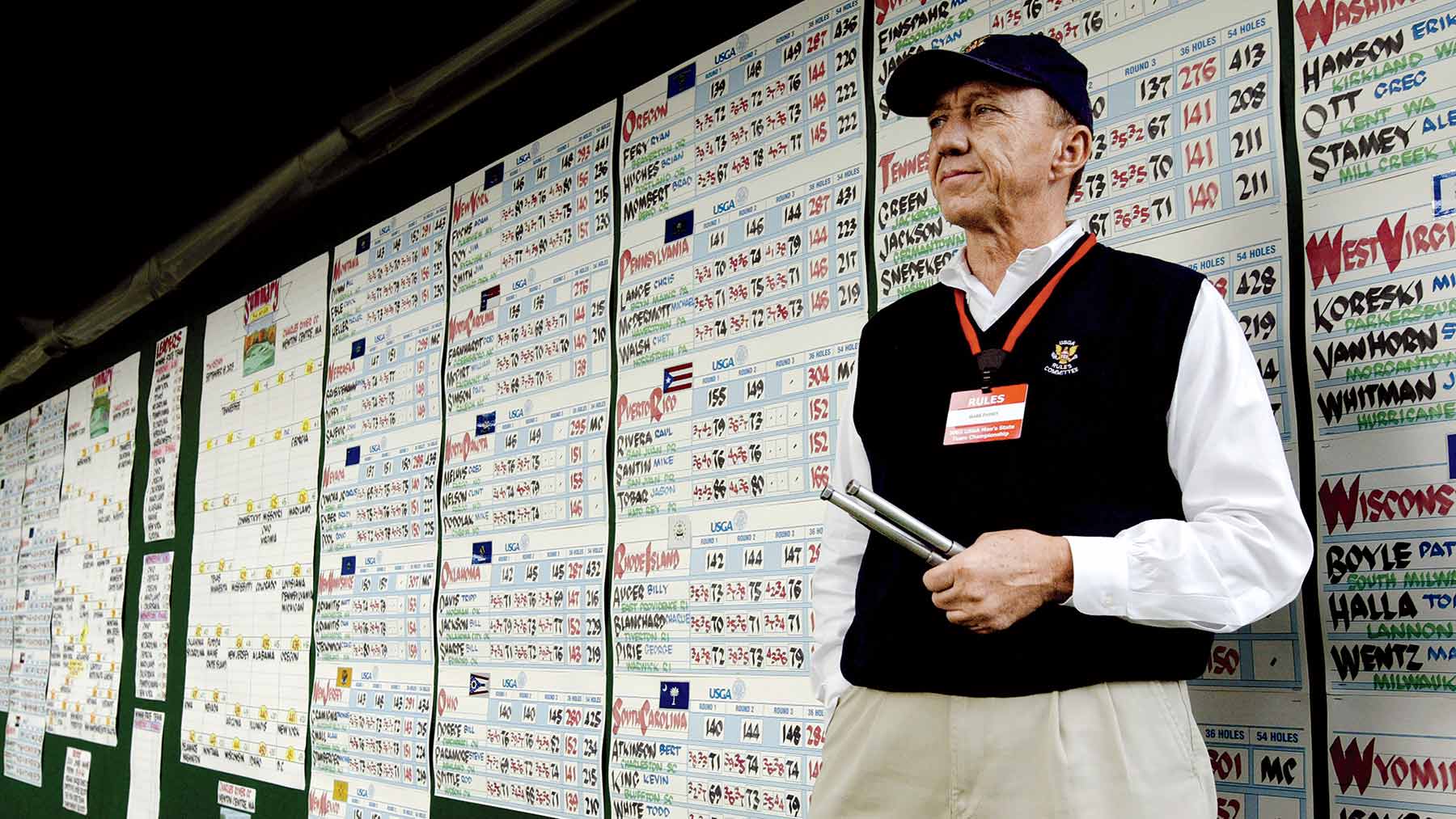
Ray Stansberry didn’t even have to turn around. He knew when Miguel Ángel Jiménez was lurking behind him. The thick smell of cigar smoke always gave him away.
As the PGA Tour’s longtime scoreboard calligrapher, Stansberry was, for many years, among the most popular figures on Tour — the man with the pens who posted the scores that every player and tournament patron needed to see. In an era predating electronic scoreboards and ShotLink, hanging out around “the board” — as those in the business affectionately called it — was the place to be. After all, it was often the only spot on the course where leaderboard data, in one tidy and surprisingly lavish form, was to be found.
Jiménez was one of Stansberry’s most frequent visitors. Back in the day, the amiable Spaniard would finish his round, pour a heavy glass of red wine, light up a Cohiba and head out to the board, greeting Stansberry with an enthusiastic “Mi amigo!” Then he’d study the wall of elegant letters and digits to see where he stood.
Ray Stansberry leans into it at the 2009 Travelers at TPC River Highlands.
John Woike/Hartford Courant
Stansberry, known to many players as “Rayzor Ray,” is one of several scoreboard calligraphers who once made a living with his flawless penmanship, meticulous eye and gift for quick math. Much like persimmon woods and balata balls, scoreboard calligraphy has been rendered nearly obsolete by advances in technology — specifically, by the megapixel digital screens now scattered across tournament venues and the countless leaderboard options available via smartphone.
But two things can be true at the same time: Is scoreboard calligraphy a dying art, especially on golf’s professional circuits? Indisputably. Do we miss its quirky grandeur? Unquestionably. The very sight of it conjures tournament golf’s freewheeling, low-tech days and evokes the game’s centuries-old roots.
Besides, who wouldn’t want to be able to write like this?
Calligraphy in golf scorekeeping is believed to date back to at least the 1950s. PGA professionals were even schooled in the art in order to bring upscale flourish to scoreboards for local events. Typically, there’d be a board positioned on the course and another in the press area, with a calligrapher and, usually, a couple of assistants for each.
Most scoreboard calligraphers use four or five pens (red, black, blue and green are the go-tos), but there’s no one way to ply the trade. Refillable-ink markers are an option. So are Sharpies, in bulk — six of each color might be used in a single event. Whatever the writing tool, ink-stained hands were and still are inescapable battle scars of the work.
“I’ve always said I’m just an adult who never gave up my crayons,” jokes Stansberry.
But kid’s play it is not. Tournament weeks, especially pro events, were a remarkable grind. Just prepping a board with the players’ names and (sometimes) hometowns — neither of which you dared misspell — took hours of focused effort. Then, on the morning of the first round, the frantic penmanship would begin. Scores came in furiously, even more so when a second course was needed to accommodate a large field of players.
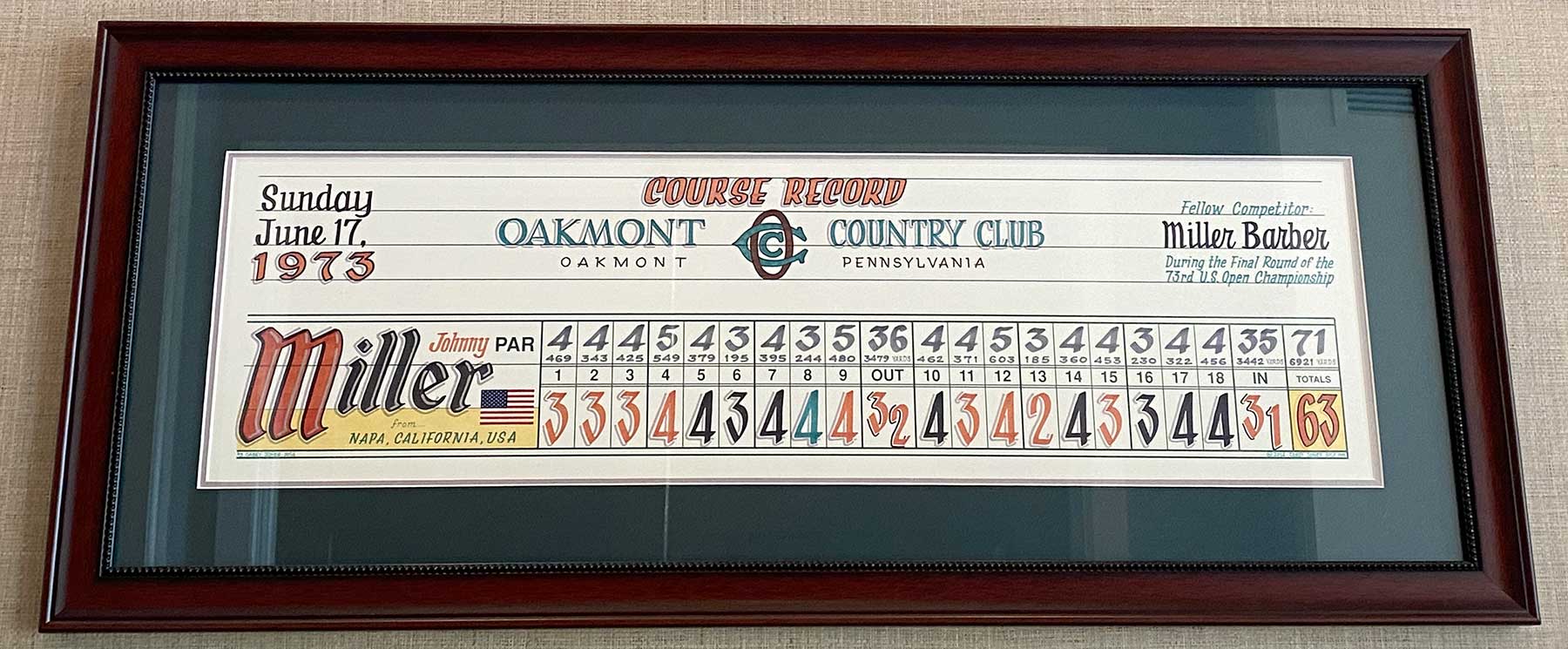
A commemorative scorecard for Johnny Miller’s legendary 63 at Oakmont, inked by Casey Jones, who offers similar custom work at caseyjonesgolf.com.
Courtesy Oakmont CC
Take the U.S. Amateur. Calligrapher Mark Passey manned the boards for every U.S. Am from 1990 to 2016 and several U.S. Opens. At the amateur events, from 9 a.m. until sunset, Passey would be handed nine-hole scorecards for 12 different players every 10 minutes. If play was spread across more than one course, those courses needed to be color-coded on the board. In addition to the main scoreboard, there were round-by-round boards, summary boards, even signage for stats like eagles or holes in one. Passey estimates that he inked, on average, 40,000 letters and numbers for every U.S. Am.
“It was a sprint,” he says. “It was a lot of fun. But oh my gosh!”
The effort was worth it. Calligraphy boards are not only tours de force of a fading art, they have also long been a natural gathering place, the nucleus of a golf tournament, a place buzzing with camaraderie. And, of course, a key source of information.
“Whether they appreciated the artistry of it or not, they appreciated knowing the scores,” Stansberry says. “Golf is a sport of tradition, and it’s a shame that tradition of [players and fans] gathering in one spot went by the wayside.”
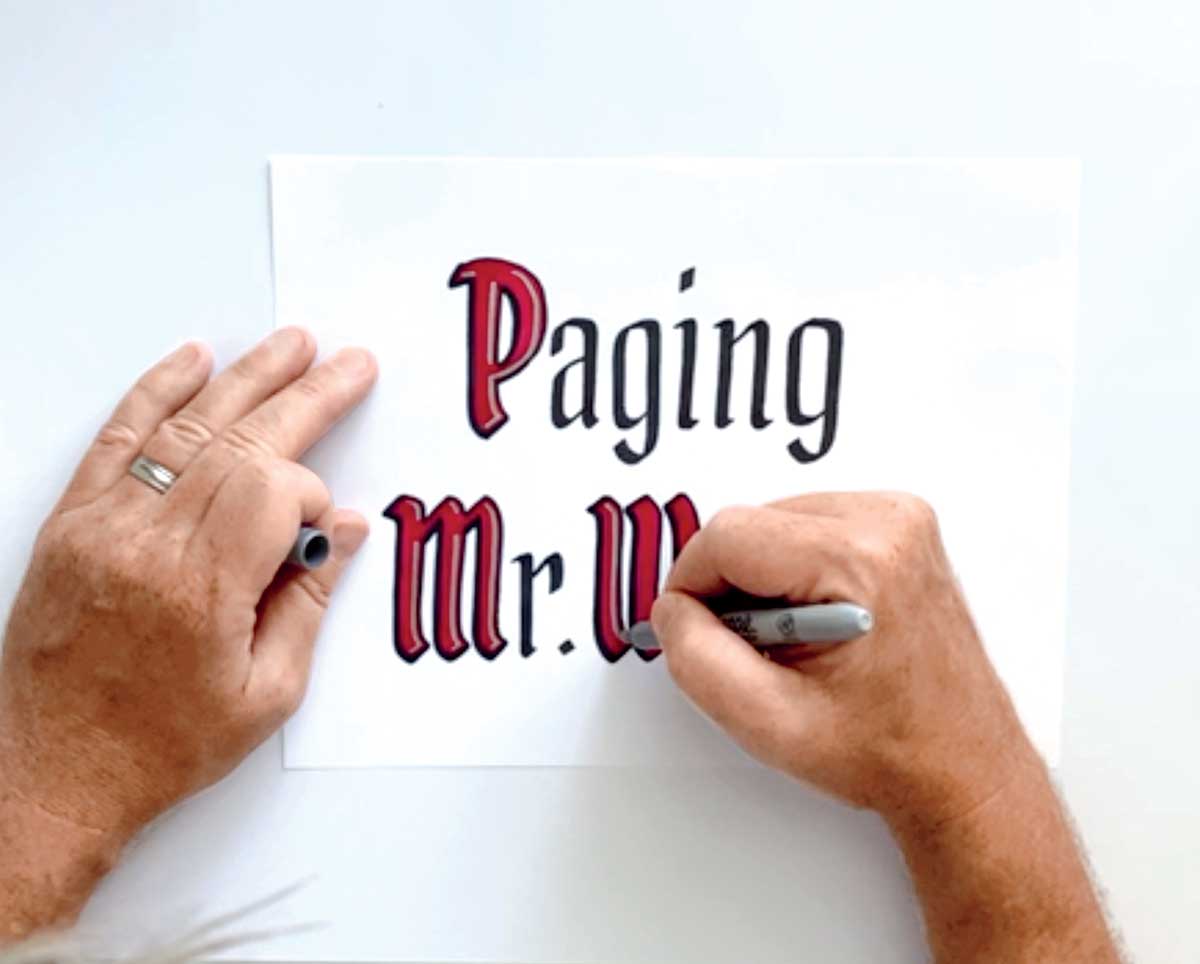
Casey Jones pens a headline for this story.
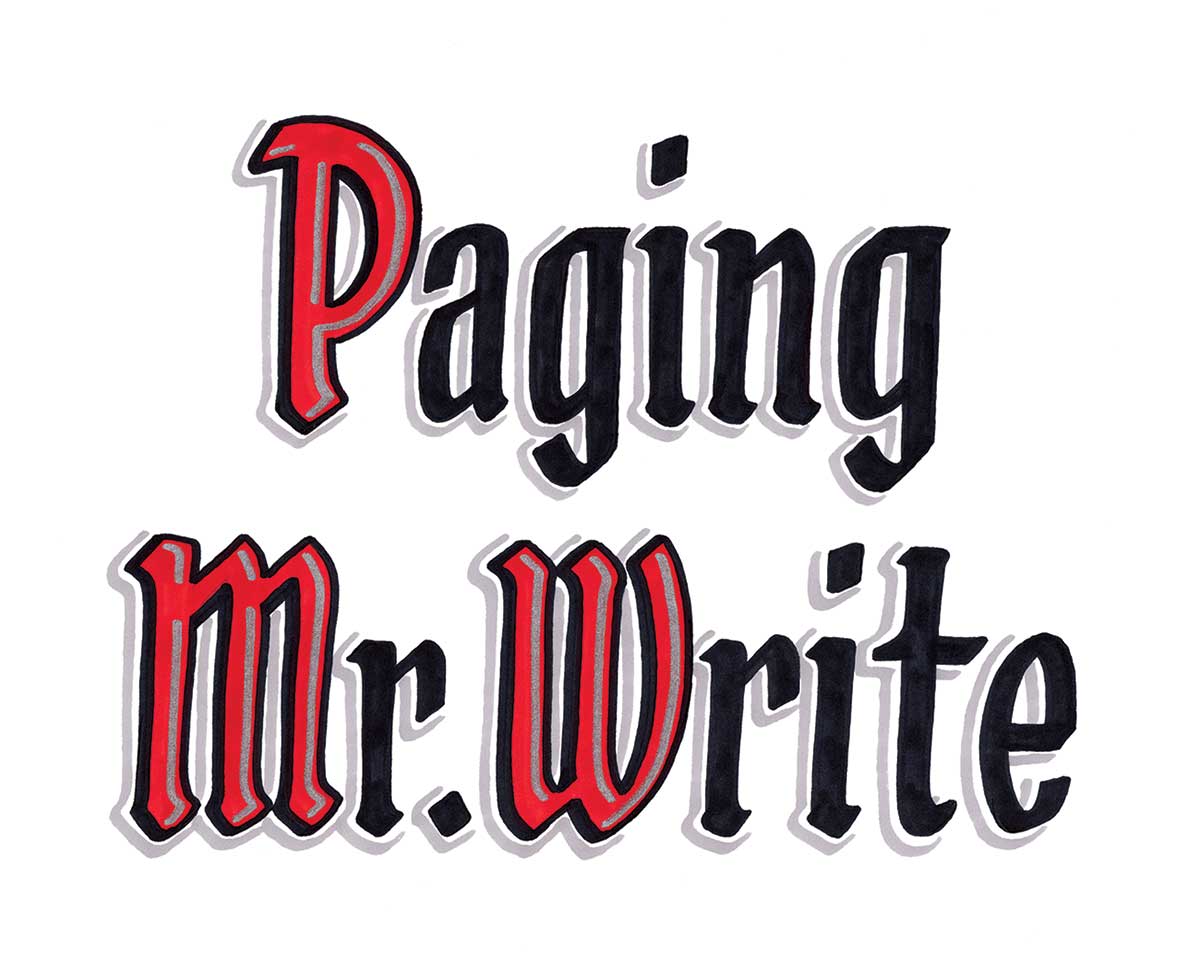
Courtesy Casey Jones
Stansberry got his start in golf calligraphy as a club pro in Oklahoma. He made boards for local events, earning a reputation for fine work along the way. In 1994, he landed a part-time job with the PGA Tour and became its full-time scoreboard calligrapher in 1996.
About the same time, Casey Jones, another master of the form, first fell in love with it. He still remembers the day — a Friday in March 1995. The Nestlé Invitational was being held at Bay Hill Club and Lodge. Jones, then a 26-year-old graphic designer, had moved to Orlando two years earlier looking for work, but on this day he decided to take in some golf. That was the plan, at least — until he stumbled upon the board Tour calligrapher Irv Batten was working on.
“I was fascinated by it,” Jones recalls. “It just appealed to everything I liked. I love golf, and I love the scoring side of golf, and I also had the artistic ability to appreciate his work. I just stood there and thought, This could be a thing. This could be a thing I could do.”
Batten, the Tour’s staff calligrapher prior to Stansberry, taught Jones about the business and encouraged him to reach out to other tours and tournaments to market his services. So Jones got to work, mocking up calligraphy boards, taking photos, slapping them on flyers and sending them off to any tournament director he could find. In the summer of 1996 he started to get responses; in 1997 he had about 30 events on his calendar as he traversed the country honing his craft.
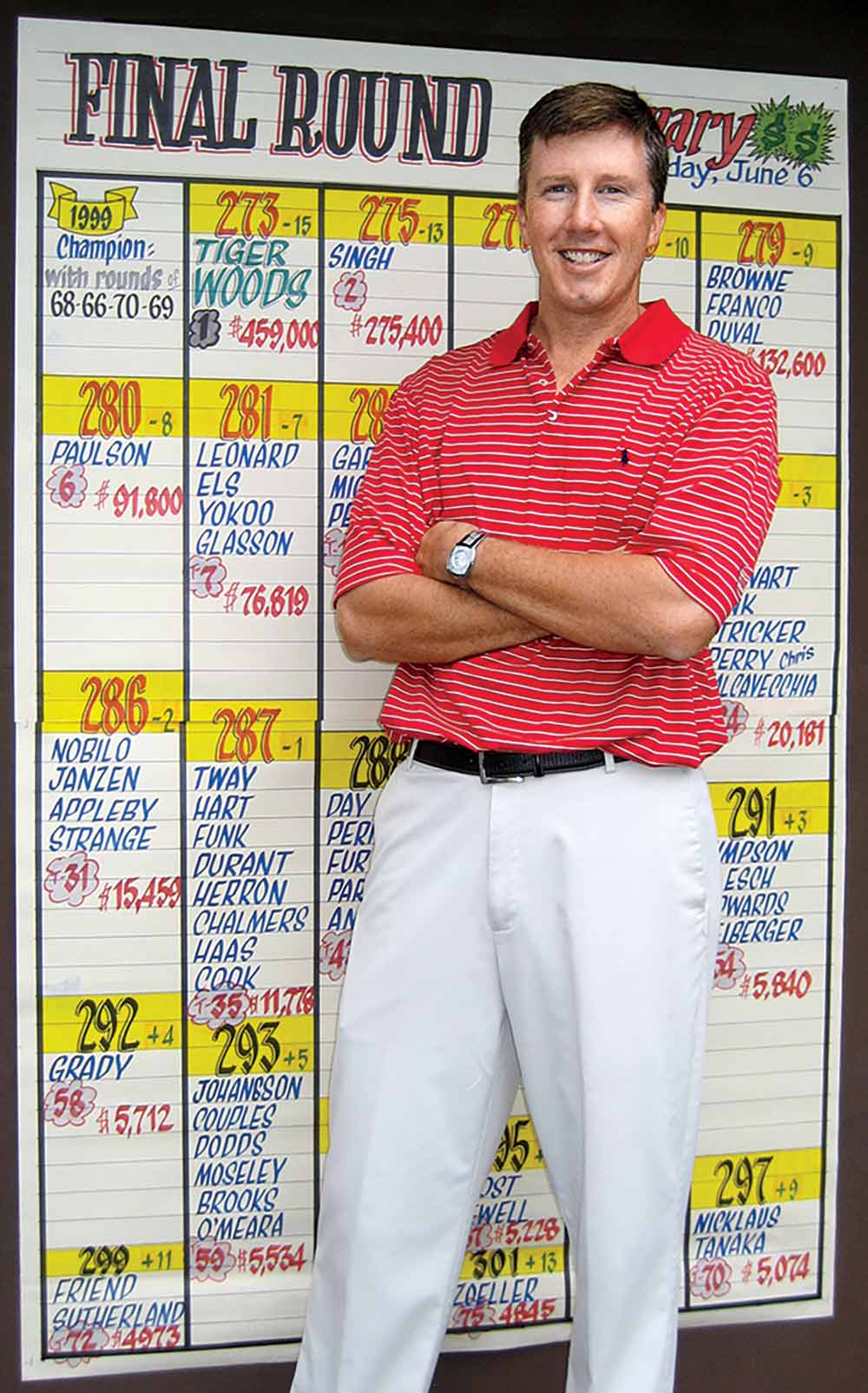
Casey Jones in front of his summary board at Jack’s house, the 1999 Memorial Tournament in Dublin, Ohio. Note the winner: Tiger!
Courtesy Casey Jones
Life was good. Then tech began to transform golf’s now elaborately wired fields of play. The glory days of those exquisitely rendered numbers, stylized names and mesmerizing colors? Almost completely gone.
“It’s on life support,” Jones laments. “It’s a thing that is still awesome to have at a tournament, but I think after a while people are going to forget scoreboard calligraphy even existed.”
For Stansberry, the turning point came in 2010. That’s when the PGA Tour stopped subsidizing boards and eliminated his staff position. Tournament directors still had the option of paying contractors out of their own pocket to continue the tradition. And some did. But that work eventually dwindled too.
Boards had become nearly extinct at Tour stops by about 2015, says one Tour official. Same goes today for the LPGA, Korn Ferry and Champions tours. The USGA still uses them for some of its events but, notably, not the U.S. Open.
The LPGA’s stop at Kingsmill Resort was one of the last holdouts, and it was the only work remaining in the pro ranks for longtime calligrapher Paul Pope. There was a time when Pope tackled 20 to 30 events a year, traveling with the LPGA, the Champions Tour, the PGA Tour and more. He’s worked his magic markers at NCAA championships, Solheim Cups and Walker Cups too. But the tournament at Kingsmill Resort in Williamsburg, Va., which was in limbo with an uncertain sponsorship, was left off the 2022 LPGA schedule. Pope, 60, is of the same vintage as Stansberry (61), Passey (74) and Jones (52).
“We all love the work,” Pope says. “Otherwise, we wouldn’t have stayed in it for as long as we did.”
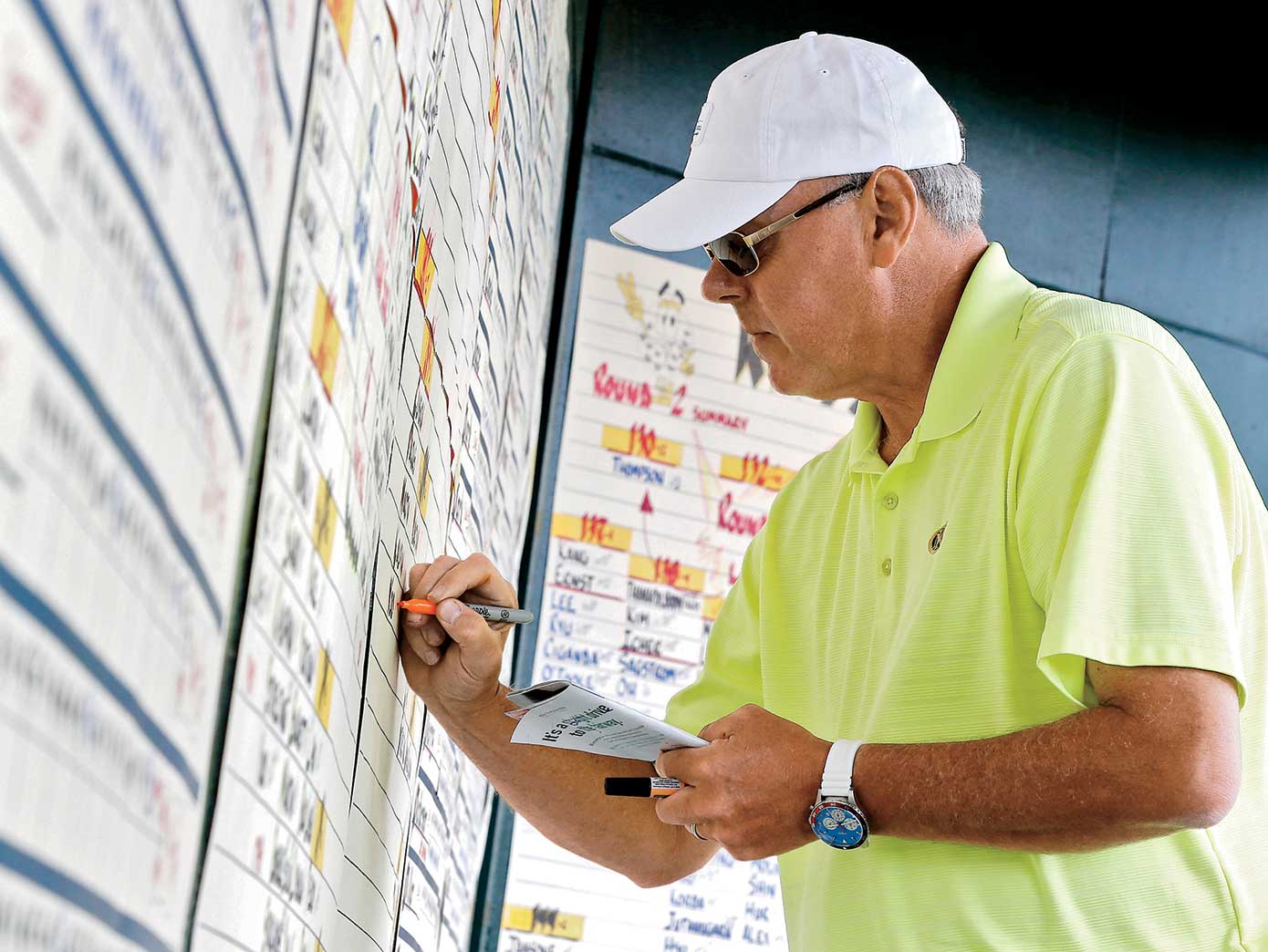
Paul Pope penning a showpiece at the 2017 LPGA Kingsmill Championship in Williamsburg, Va.
Mark Gormus/Richmond Times-Dispatch
Seeking financial security — and, maybe, seeing the writing on the wall — Jones, in 2003, took a job with the PGA Tour as a scoring official, which he now does part-time. His last board for the Tour was at the 2016 RBC Heritage at Hilton Head, where he worked up the scores in the media center for the press. He’s 99 percent certain it was the last press-tent calligraphy board created on the PGA Tour.
These days, Jones picks up the random tournament gig — mostly at the club level, where boards still provide a throw-back thrill — but he’s focused most intently on his side hustle: creating personalized golf awards at caseyjonesgolf.com. He recently inked commemorative hole-in-one plaques for Justin Thomas and Tony Finau.
Jones’ slice of Tour life may be a bit on the wane, but the memories live on. He penned John Daly’s infamous 18 at Bay Hill in 1998. In ’99, he was on-site for Tiger Woods’ first Memorial victory and stood just a few feet away as Woods and the Golden Bear bantered off the green. In 2000 — back when he would sometimes write the champions’ names on those giant winner’s checks — he got into an argument with a tournament staffer who accused him of misspelling Phil Mickelson’s name. (He hadn’t.) Eight years later, at the U.S. Open at Torrey Pines, Jones encountered some of the loudest roars he’d ever heard on a golf course as Woods and Rocco Mediate battled down the stretch.
“I kind of feel like I was born to be a scoreboard guy,” he says. “It was the perfect marriage of my passion for golf and my artistic ability and kind of a fluky thing. If you were to ask me in college what I’d be doing for a living, I would never have guessed I’d have a career in penmanship.”



